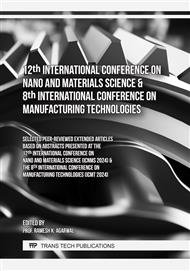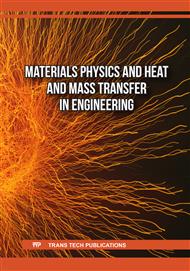p.47
p.57
p.63
p.69
p.77
p.85
p.91
p.97
p.105
Influence of Shape and Bubble Diameter on Marangoni Convection in Gold Nanoparticles
Abstract:
New opportunities for applications in areas including photothermal therapy (PTT), biomedical imaging, and energy conversion have been made possible by advancements in nanoparticle technology. Understanding the thermal and fluidic behavior of these nanoparticles is crucial for their effective utilization. In this computational study, numerical simulations are used to examine the convective velocities connected to various gold nanoparticle (AuNP) morphologies, including nanorods, nanoshells, and nanodiscs. Our findings clearly demonstrate that nanorods have the maximum convective velocity of 91 µm/s, making them the most attractive choice for applications needing excellent thermal and fluidic performance. Additionally, we investigate the relationship between bubble diameter and convective velocity in the vicinity of gold nanorods and nanoshells. Our findings indicate that as the bubble diameter expands to 10 μm, there is a noticeable surge in convective velocity, which eventually plateaus. Furthermore, we explore the impact of shell thickness and core radius on convective velocity. A decrease in shell thickness and an increase in core radius were found to significantly enhance convective velocity, with an optimal core radius of 38 nm identified for peak performance. These findings provide vital information for the design optimization of AuNPs, notably for PTT and photoacoustic (PA) imaging, two fields where precise control of thermal and fluidic processes is essential.
Info:
Periodical:
Pages:
91-96
Citation:
Online since:
June 2024
Authors:
Price:
Сopyright:
© 2024 Trans Tech Publications Ltd. All Rights Reserved
Share:
Citation:



